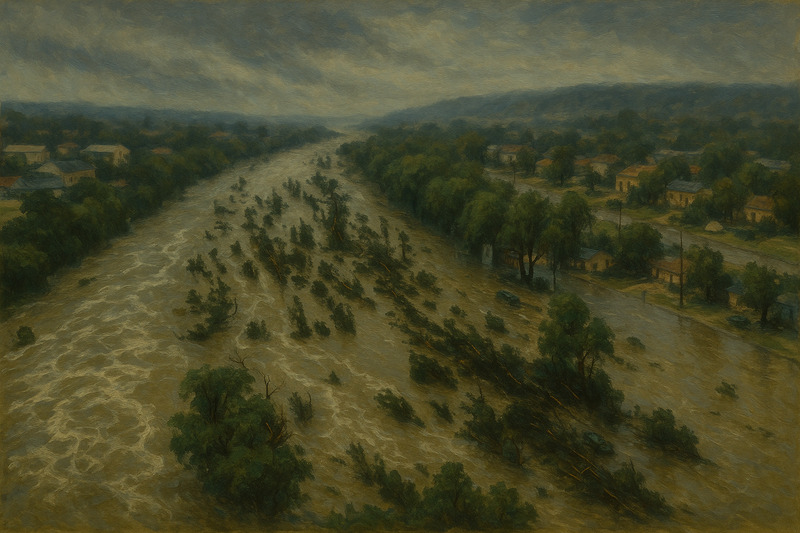
When devastating floods swept through Texas this month, killing more than a hundred people in mere hours, a familiar refrain returned. “What used to be extreme becomes average, typical,” said Princeton climate scientist Michael Oppenheimer. “And what used to never occur in a human lifetime or maybe even in a thousand years becomes the new extreme.”
To many, this sounds like a clear-headed summary of the moment we’re in. But beneath that clarity lies something more fragile—a tendency to impose order on a system that is anything but orderly.
Let’s begin with what can be observed: the climate is changing. Many experts conclude that human activity is driving that change. Temperature records show a clear upward trend over recent decades. Sea levels have risen. Precipitation patterns have shifted in complex ways. But calling this moment the “new normal” implies a kind of settled stability. It suggests we’ve moved from one recognizable pattern to another and now understand the contours of what comes next. That idea is not only misleading—it may be dangerous.
The Earth’s climate is not a machine that warms in predictable steps. It is a dynamic, nonlinear system, prone to abrupt changes and feedback loops that resist simple modeling. Certain risks—such as heatwaves, flooding, and drought—have increased in many regions, and some experts see signs that these changes may be influenced by broader climate trends. But the idea that yesterday’s outliers have become today’s baseline turns a probabilistic shift into a deterministic narrative. That’s not how this works.
Take Hurricane Harvey in 2017. The storm stalled over Texas and dropped more than 60 inches of rain, inundating neighborhoods and displacing hundreds of thousands. Researchers later concluded that climate change likely intensified the storm’s rainfall. But even then, the conclusions were carefully qualified. Harvey wasn’t caused by climate change in isolation—it was shaped by a tangle of atmospheric and oceanic conditions. Its severity became clearer only in hindsight.
That complexity is the point. When we package weather chaos into the comfort of a “new normal,” we risk more than inaccuracy. We risk public disengagement. The phrase is designed to wake people up. But over time, it can backfire. People notice when dramatic warnings don’t always align with lived experience. They grow skeptical—not of the climate itself, but of how it’s talked about. That’s when concern turns into cynicism. And cynicism is the enemy of resilience.
Of course, the impulse behind the “new normal” framing isn’t malicious. It’s rooted in a desire to make the science accessible, to motivate action before it’s too late. But clarity should never come at the expense of honesty. What seems most responsible to acknowledge is this: we don’t fully know what comes next. The atmosphere may produce patterns we haven’t seen before. It may stabilize in ways we don’t anticipate. It may behave in ways we’re not prepared to explain.
That uncertainty isn’t a flaw in our understanding. It’s a reflection of reality.
Even our language hasn’t caught up. Phrases like “hundred-year flood” or “thousand-year event” rely on statistical assumptions drawn from a relatively stable past. But that past is no longer a reliable guide. In a shifting climate, those benchmarks lose their meaning. They belong to a world that no longer exists.
So what’s the alternative? Not fatalism. Not paralysis. Just intellectual seriousness. Scientific and policy communication often leans toward confidence, but in moments like this, caution and clarity may be the more credible path. That means speaking in probabilities, not proclamations. It means trusting people to handle ambiguity when it’s presented with clarity and care.
Extreme weather isn’t the new normal, and it’s not a return to any previous one either. It reflects a system in flux—unstable, still emerging, and resistant to simple definition. To label it too early is to misread the moment. To frame it too neatly is to understate the volatility we’re living through. We’re not transitioning from one stable state to another. We’re moving through a period of rapid and unpredictable change, and it remains unclear what kind of stability—if any—might follow. And if we pretend otherwise, we risk misunderstanding not just the climate, but the future itself.
Geoffrey Farmer
gkfarmer1983@gmail.com
